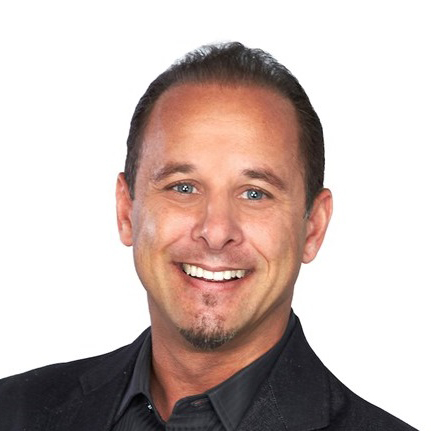by Miles Bodzin, D.C. •
CEO of Cash Practice Systems •
We’ve invented all kinds of clever analogies to get the patient to understand. We say things like, “You know, it’s like going to the gym. It takes time to make a change.” Or, “It’s like getting braces on your teeth. It takes time.” Another I often hear is “It’s like a broken bone. It takes time to heal.” There are lots of ways to talk to someone about it and attempt to educate them on why chiropractic takes time.
Even with all these great analogies, we often feel disgusted that we have to somehow even deal with this negative comment. Since we chiropractors like to get to the cause of things, I’d like to talk about why people even have this thought to begin with. I mean, where does it come from?
What actually causes people to think, “Once you go to a chiropractor, you have to go the rest of your life?”
Some of you reading this are probably assuming it comes from doctors who tell patients they need care for the rest of their life. Sure, there are doctors who tell their patients that. However, these patients don’t usually think of it in a negative sense. It’s usually a pretty positive one. It’s these doctors who usually take the time to educate the patient over a long period of time as to why they need ongoing care.
So where does this negative sentiment come from? I believe the cause of the negative tone is a result of patients not being told by their chiropractor that there’s going to be an end to their care plan. There is a need to forecast care for the patient right at the start. Think about it. If a doctor says to a patient at a report of findings, “Let’s take care of you for a month, then I will re-evaluate you and let you know how you’re doing.” Seems acceptable to the patient. This is what I refer to as an Open-Ended Treatment Plan.
The patient starts care without knowing how long it will go on for and a few weeks go by. It’s time for the chiropractor to do their first re-exam. At its conclusion, what does the doctor say the patient needs? “Mrs, Jones, you still need more care.” At this point, some patients drop out. After all, they’re out of pain. But let’s assume Mrs. Jones continues with care.
Another month passes by and the chiropractor does their second re-exam. What does Mrs. Jones gets told again? “More care is needed”. By the way, it doesn’t matter how many visits are being provided between the re-exams and further recommendations for more care. It’s the fact that at each progress exam the patient is being told they need more care.
What does the patient start to do? They form their own opinion! I know, that seems crazy. But they actually start to think to themself, “This is going on forever. Every time I get evaluated, the doctor just tells me I need more care. Damn, they were right. It’s true, this chiropractor just wants to keep me coming back.”
It also happens if the doctor fails to provide feedback at re-exams or do re-exams at all. Patients need to know if they’re making progress towards a goal or not. Even if you tell them in the report of findings how long care will take, if you don’t do re-exams or you fail to effectively communicate the progress being made, the same thing happens.
Understand, the patient can start forming this negative opinion very quickly. It’s not that they have had months and months of care. It’s the fact that the doctor never told the patient that their care plan would end. And in order to do that, the doctor needs to tell the patient how long the treatment plan will take. What I refer to as a Closed-Ended Treatment Plan. It’s only once the treatment plan ends where they transition to a wellness plan.
The cause of the negative statement, “Once you go to a chiropractor, you have to go the rest of your life”, comes from chiropractors who do Open-Ended Treatment Plans. It comes from the failure of the doctor to let the patient know how long they anticipate it will take to get well. As stated earlier, the failure to effectively communicate progress throughout care can result in this too.
No doubt some of you reading this right now are saying, “But how do I know how long it will take?” If you’ve been in practice for more than just a few years and have not gotten a good idea of how long it takes for the care you provide to create an objective outcome, then seek some help with your technique. And by all means, make sure you know the goal you’re trying to accomplish with your patients.
Now, since we are on a journey together to find the cause of this negative statement, we need to dig a little deeper. If the negative comment is caused by the doctor doing an Open-Ended Treatment Plan, what causes a doctor to fail to tell a patient how long care will take?
From this point forth, I will assume you have an idea of how long you truly believe it will take for your patient to reach a maximum level of improvement. The question is if you know, why aren’t you telling your patient? Do you think you should only recommend care that insurance covers? Are you scared to tell the patient? Are you only treating them until they get out of pain? Do you not believe in chiropractic? Take a long, hard look in the mirror and ask yourself.
From the thousands of doctors I’ve spoken with, there seems to a common theme for most of the doctors who do this. Most chiropractors say they want to recommend the care the patient needs. Not just what insurance covers. Most tell me they are not just doing pain relief care. That they want to do more than just get the patient out of pain.
The most common reason is not surprising at all. It’s the fear of rejection. The fear of rejection is the underlying reason most chiropractors fail to tell a patient the care they really need. I often hear doctors say things like, “I’d rather have them get some care than no care.”
It often manifests itself with chiropractors making excuses like, “I don’t have a crystal ball. I can’t predict what the patient will need.” Really, you have no idea how long it will take whatsoever for a patient to get well?
My fellow chiropractors, forecasting care for the patient right from the beginning is a cardinal rule of patient retention. But moreso, failure to forecast how long your care will take not only hurts the patient but hurts the profession as a whole. It harms chiropractic because it continues to create negative brand equity. And the patient is harmed because you’re making it difficult for them to follow through with care. They lose, you lose and the profession loses. Get over your fear of rejection, and start telling patients what they need right from the start of care.
About the Author:
For nearly two decades, Dr. Miles Bodzin ran a successful, high-retention, wellness practice in San Diego, CA. He retired from practice in 2011 to focus solely on helping chiropractors increase their patient retention. As Founder and CEO of Cash Practice Systems, Chiropractic’s #1 Technology Platform for Creating Loyal Patients, his leadership resulted in serving over 6,000 chiropractors, being listed on the Inc 5000, as well as being named one of San Diego Business Journal’s Most Admired CEOs. Dr. Bodzin may be booked for interviews and speaking engagements at bookings@cashpractice.com or reached directly at drbodzin@cashpractice.com. His inspiring story can be watched at TheCallingMovie.com.










 ▶︎
▶︎  Why is the Discount Challenge prize amount $15,024? Because that is the average “per-occurrence” fine for Medicare inducements. That’s not $15,024 per patient, that’s not per provider, that’s PER VISIT. Stinks, doesn’t it? To us, the prize amount is worth the investment if we can help our profession better understand proper discounting.
Why is the Discount Challenge prize amount $15,024? Because that is the average “per-occurrence” fine for Medicare inducements. That’s not $15,024 per patient, that’s not per provider, that’s PER VISIT. Stinks, doesn’t it? To us, the prize amount is worth the investment if we can help our profession better understand proper discounting.